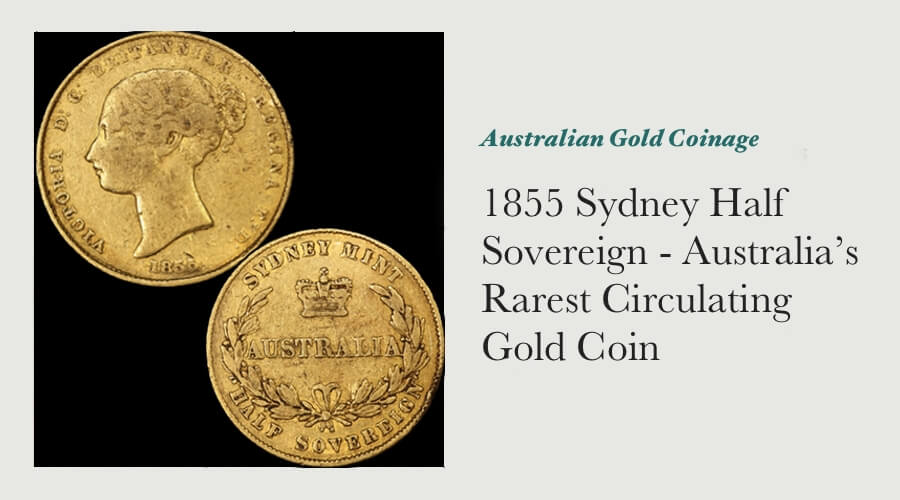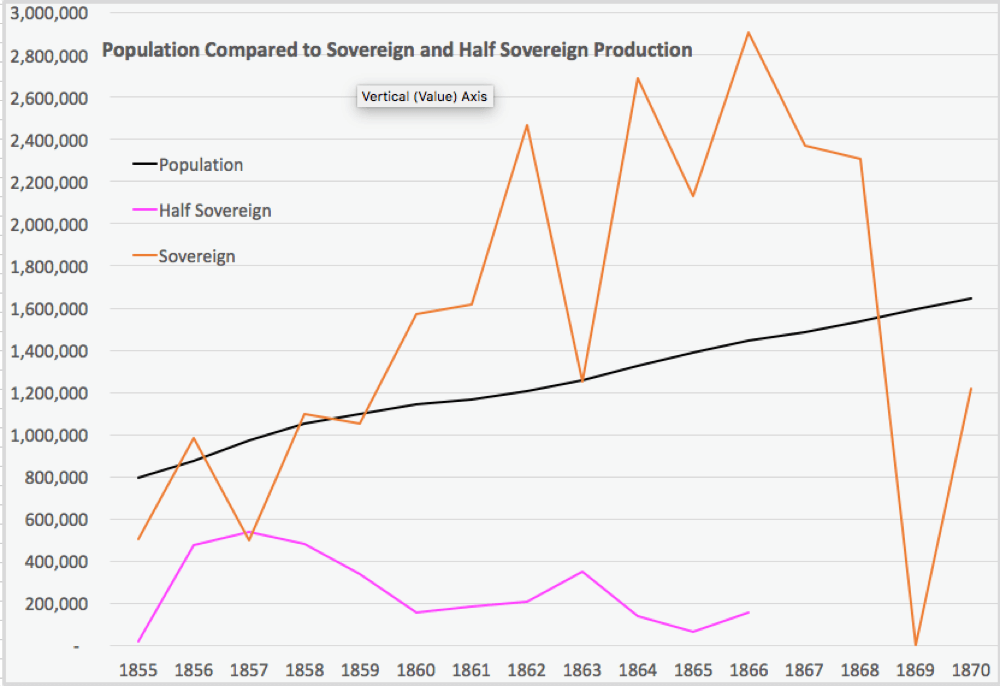1855 Sydney Half Sovereign - Australia’s Rarest Circulating Gold Coin

The doors of the Sydney Mint opened to receive deposits on May 14th, 1855, the first sovereigns were struck June 23rd, 1855.
 The declared mintage for the 1855 half-sovereign is 21,000 coins - we are fortunate that contemporary media reports have recorded the exact date those coins were struck and issued.
The declared mintage for the 1855 half-sovereign is 21,000 coins - we are fortunate that contemporary media reports have recorded the exact date those coins were struck and issued.
The Sydney Morning Herald recorded that the first batch of half sovereigns was struck by the Sydney Mint on Friday, July 27th, 1855: “The first issue of half-sovereigns also took place to-day to the amount of 3,000 (£1,500).”

The Sydney Morning Herald recorded that the second and final batch of half sovereigns were struck by the Sydney Mint on Saturday, August 18th, 1855: “This morning the Mint issued 18,000 half-sovereigns.”
By way of comparison, the Australian Bureau of Statistics (ABS) states that the population of NSW was 266,001 in 1855. This would mean that there was just one half-sovereign for every 12 people in the colony.
The Type I Sydney Mint Obverse Design:
The Type I Sydney Mint sovereign obverse features a filleted bust of Victoria, presumably modelled by Leonard Wyon on the young head obverse of Victoria employed on the sovereigns being struck at the London mint at that time.
Two plain bands run from behind Victoria’s ear to the middle of the top of her head.
Although it is an attractive depiction of Queen Victoria, the initial official approval of James Wyon’s design quickly waned after it was introduced.

The Sydney Mint Reverse Design:
The British Order in Council of 18 October 1854 defining the design of Australia’s first sovereigns stated that it was to include “For the reverse, the word AUSTRALIA placed in the centre of the piece, encircled by a laurel wreath and surmounted by the Royal Crown, with the inscription ‘SYDNEY MINT, HALF SOVEREIGN’ ”.
Although it is not at all unusual that a wreath should be seen on a coin of the British Empire – they have been seen on the obverses of many English coins right back to Roman times – the Sydney Mint sovereign is one of the first two British gold coins to include a wreath as part of its reverse design.
Wreaths have been used to identify heroes, champions and royalty since ancient Greek times, using the leaves of many different plants. Specific plants were associated with certain virtues and character traits and were also used to honour the deity with which each plant was associated.
The laurel is a small evergreen tree that grows in southern Europe, with glossy aromatic leaves and dark purple berries.
The ancient Greeks used laurel wreaths to honour achievement in the arts or intellectual pursuits.
The Romans later extended the use of laurel to mark a military achievement.
Over time, a wreath also came to be used to symbolise a ruler’s sovereignty and, at times, divinity.
We can only surmise that laurel was deliberately chosen for the wreath on the reverse of the first Sydney Mint sovereigns as a symbol of the victory that the discovery of gold in Australia represented, rather than being selected simply for its attractiveness as a design element.
The use of the word “AUSTRALIA” on the reverse has also attracted comment over the years, for it was another half-century before the Australian colonies became a nation under one government.
While it would have been incredibly prescient for the decision-makers in the British Treasury of the mid-19th century to foresee that the colonies first claimed by Cook and his contemporaries would one day become an independent nation, the decision to use “AUSTRALIA” to indicate the continent on which the sovereigns would circulate was not entirely without basis.
Although Australia was not officially named until Federation in 1901, the word “Australia” had been recorded to describe the continent as early as 1794. Captain James Cook called his discovery “New Holland”, while European philosophers and early 16th-century map makers named the great southern continent that they assumed to exist south of Asia “Terra Australis” – Latin for “southern land”.
It was the English navigator Matthew Flinders, the first person to circumnavigate and map Australia's coastline, who perhaps first expressed a strong preference for the name “Australia”.
The Governor of New South Wales from 1810, Lachlan Macquarie, also championed the word by using it in his official dispatches to London. It is on the basis of these precedents that the British Treasury chose the word “AUSTRALIA”.
It was used to indicate the limits within which the Sydney Mint sovereign was intended to circulate, not the political entity the colonies would one day become.
.jpg)
A Distinctive Pair of Designs
There was a deep concern among British Treasury officials that if the purity or execution of the first sovereigns produced by the Sydney Mint were for some inexplicable reason inferior to those being produced at London, the consequences for British trade throughout the world could have been immense.
It is not beyond the realms of logic that Treasury officials requested Wyon’s obverse be altered to a more uniquely Australian design in order to further increase the difference in visual appearance between sovereigns produced at the Sydney Mint and those produced at London.
As the passage of time proved that concerns regarding the purity and quality of the gold coins of the Sydney Mint were proven to be unfounded, Royal Mint staff chose to ensure that the purity, weight, alloy and designs on all sovereigns and Half sovereigns across the British Empire were completely uniform.
The relatively low mintages of the 1855 and 1856 Sydney Mint half sovereigns may be explained not only by the amount of gold produced by the goldfields of New South Wales and Victoria at the time but also the proportion of that gold that was coined into sovereign form.

Footnotes:
1. Sydney Morning Herald (NSW: 1842 - 1954), Saturday 28 July 1855, page 6
3105.0.65.001 - Australian Historical Population Statistics, 2014